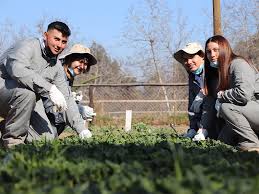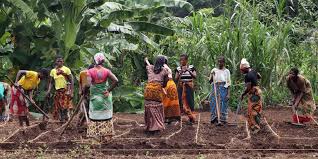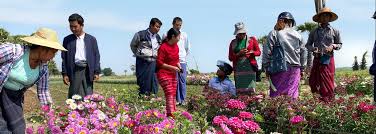Many advanced and developing countries have embarked on one form of rural youth programmes or the other in agricultural extension. In this article, the UNESCO’s Info Youth Programme, the Village Polytechnic Programme of Kenya and the Village Youth Economic Group of the United Republic of Tanzania were discussed.
Read Also: The Health Benefits of Using Accent Seasoning on your Cooking
UNESCO’s Info Youth Programme in Agricultural Extension

The UNESCO’s info youth programme was established in 1991 to address the social and economic needs of young people particularly in developing countries.
The programme was premised on the findings that young people were most vulnerable and affected by difficult social and economic conditions such as the growing rate of illiteracy, unemployment, poverty, consequences of conflicts, drug abuse, HIV/AIDs pandemic and various forms of marginalisation.
Young people are at the forefront of technological innovations and development, hence the crucial need to improve and expand their access to the benefits of information.
The programme was run in partnership with government ministries and non-governmental organisations. The programme has been carried out in New Delhi, Afghanistan, Africa, Latin America, Europe, Asia and the Pacific.
The general objective of the programmes was to improve and expand the access of young people to the benefits of information. The specific objectives are to:
ensure equitable access to information as well as economic, political and social empowerment programmes for youth;
promote new ways of information dissemination and creative expression for the youth.
Enhance the ability of youth in accessing information with the assistance of new information technologies both in work and learning environment.
Bolster the emerging globalisation of knowledge among young people;
create and share new knowledge with the aid of information and communication technologies.
Keep decision makers up-to-date on current trends and issues relating to young people;
provide access to information and preventive education support in the global fight against HIV/AIDS;
raise awareness and facilitate the initiation and training of young people in information and communication technology skills, particularly in disadvantaged areas and post conflict zones.
Promote unity of cultural and language diversity among young people; and
support the youth to foster a culture of peace, tolerance and sustainable development (Ovwigho and Ifie, 2009).
Village Polytechnic Programme (VPP) of Kenya in Agricultural Skills Development
The Village Polytechnic Programme was essentially a youth vocational skills acquisition programme covering all areas of mechanics.
The Village Polytechnic was established in 1969 with 280 village polytechnics. The programme fell under the administrative responsibilities of the Ministry of Culture and Social Services. At the local level, the village polytechnics were administered by management committees working under a manager.
The desire for village polytechnic was proposed by host communities. In the first instance, the communities were expected to show their commitment by making available the facilities required for the training programme.
The Ministry makes available technical advice on matters such as appropriate training disciplines, tools and equipment required. After the initial obligations have been met, application could be made to the village polytechnic to be formally registered. If the application was granted it qualifies for further assistance.
At this level, the assistance might include payment of salaries, supply of some tools and expenditures. The programme was also actively supported by a number of international agencies. Some of the agencies supplied volunteers to work as instructors while others assist in the supply of tools and equipment.
The objectives of the programme were directed towards self-employment in the rural areas although some graduates did seek employment in urban areas while others applied their skills on part-time basis in agriculture as the primary source of income.
Any village polytechnic was likely to operate training programme in three or four of the following areas:
i. Brick work and Masonry.
ii. Carpentry and Joinery.
iii. Blacksmithing.
iv. Car Mechanics.
v. Plumbing and Pipe Fitting.
vi. Leather work.
vii. Tailoring.
viii. Home Economics.
ix. Typing.
The training could be on production basis where the items made were sold or services rendered were paid for on a commercial basis. One of the more common examples was where village polytechnics gave training in construction work.
They tendered for and obtained contracts for the erection of buildings. The monies generated through production activities were supposed to be used in meeting recurrent costs but less than 20 percent of these expenses were likely to be met in this way, hence the need for financial support from the ministry and donor agencies.
Graduates from village polytechnics were motivated to form groups and engage themselves in production activities on a cooperative basis (Zarraga and Green, 1985).
Read Also: How to Extract and Package Snail Slime (Snail filtrate) for Commercial Use
Village Youth Economic Group (VYEG) Programme of Tanzania for Rural Agricultural Engagement

The Village Youth Economic Group Programme was an innovative programme designed to overcome unemployment particularly among primary school leavers. The government launched the Village Youth Economic Group in order to integrate young people into the development process.
The initial role of the programme was advocacy in which regional and district youth coordinators visit villages and motivate village governments to support groups. The type of venture to be undertaken depends on the potential for income generation but the commonest enterprises in the rural areas were agricultural production enterprises.
Agricultural Village Youth Economic Groups were allocated land generally about 4 hectares. The youth work this land under the guidance of village government specialists. Other assistance may be made available through district development communities in the initial tilling of the virgin land and in obtaining credit for purchase of seeds and basic tools.
The overriding role of the Village Youth Economic Group was that of a facilitator, motivating support for the economic project; bringing together experts who provide advice; and other day-to-day assistance required by the youth if they are to become self-reliant.
Rural youths are made to learn agricultural production skills through both formal and informal systems. In urban areas, the economic activities may include metal work, wood work, electronics, brick work and masonry.
Graduates from secondary technical schools or existing artisans were motivated to lead village youth economic group in urban areas for those who might not have received basic education training.
Training is given on the job and feasible arrangements were made with existing institutions to accord training related directly to the activities being undertaken by the work group.
One basic deficiency of the programme was that some groups engage themselves in activities with limited economic potentials and there was a problem of identifying which activities youth should engage in.
There were over 800 village youth economic groups throughout Tanzania under the Ministry of Information and Culture (Zarraga and Green, 1985).
Do you have any questions, suggestions, or contributions? If so, please feel free to use the comment box below to share your thoughts. We also encourage you to kindly share this information with others who might benefit from it. Since we can’t reach everyone at once, we truly appreciate your help in spreading the word. Thank you so much for your support and for sharing!

